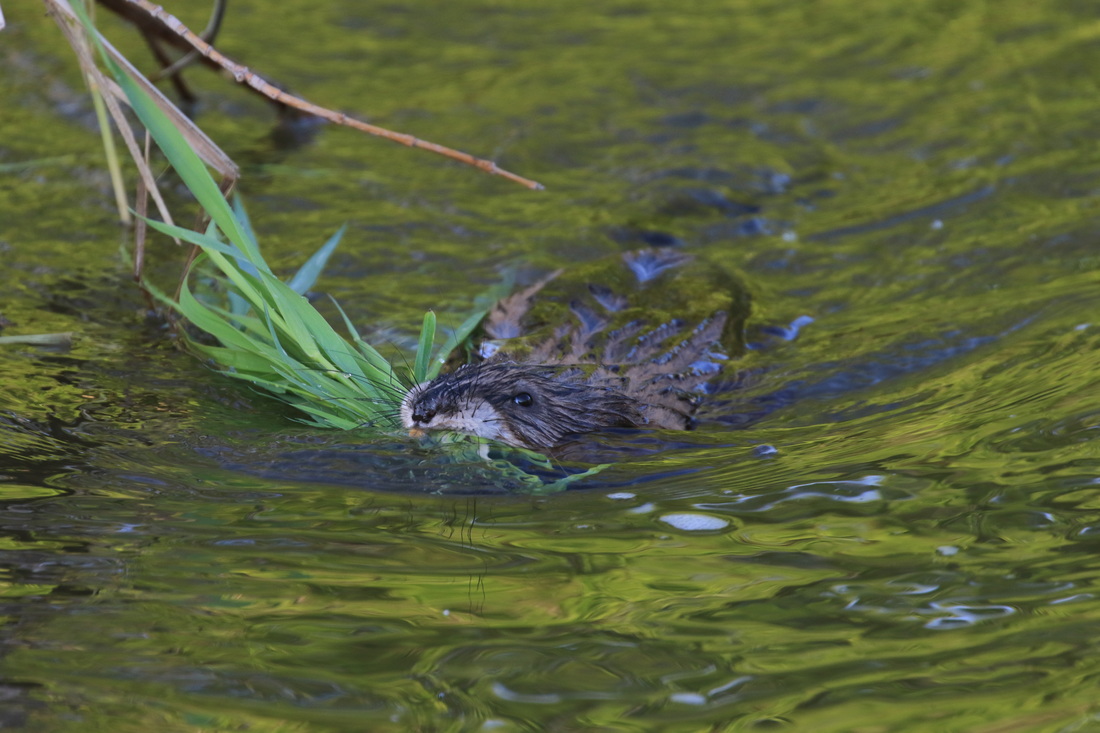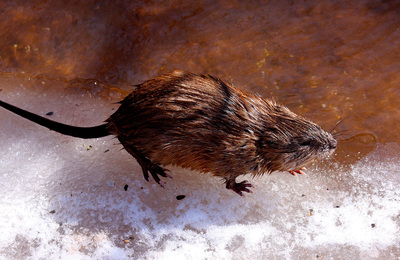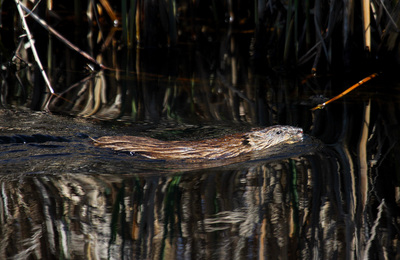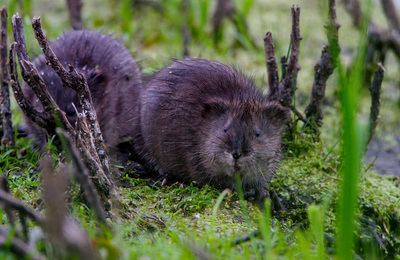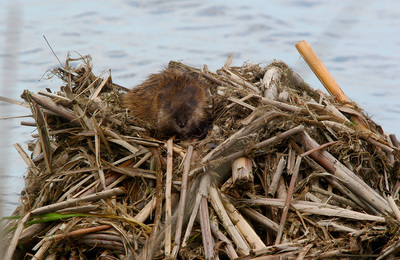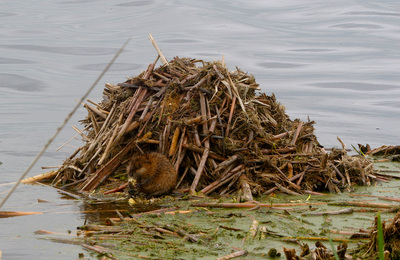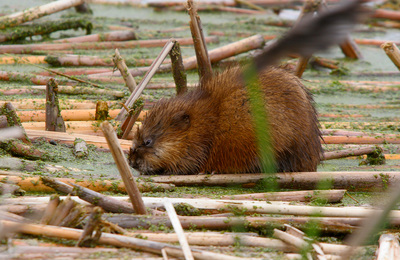MuskratThe Muskrat (Ondatra zibethicus)
The common muskrat is often mistaken for its much larger and very distant relative the beaver. (Muskrats are more closely related to voles and lemmings than they are to beavers.) Beavers have flat, wide tails whereas the muskrat’s tail is long and thin. It must be admitted however that it easy to mistake a muskrat for a young beaver until you get a look at their tails. Muskrats and beavers have ranges and habits that overlap however there are significant differences. Muskrats do not build dams and therefor do not create wetlands like beavers do. Muskrats do not cut down trees for food. About 95 per cent of their diet is plant material and the other five percent consists of fresh water mussels, small fish, frogs and small turtles. Their organic food preferences include plants such as bulrushes, cattails and arrowheads. The preferred parts of the plants include the shoots, roots and bulbs. By dining on these parts of the plants they help control the spread of plants like cattails that can overrun a wetland. Muskrats help keep open water and by doing so help promote the biodiversity of the wetland. In marshes they build “popups” that resemble beaver lodges except that they are made up of the shoots of cattails and other marsh plants. Some of these “lodges” can reach 2.5 metres (8 feet) in diameter and stand over a metre (yard) high. These larger mounds will be home to a mated pair and two or three sets of that year’s offspring, Smaller mounds will be present throughout the marsh as well. These are used as feeding spots. Muskrats are not confined to marshes and ponds. They will burrow into banks along rivers and lakeshores as long as they have access to nearby food sources (emergent water plants). Burrows are their preferred homes in winter. These bank dens can be quite extensive, One was measured has having over 100 metres (300 feet) of tunneling. Muskrats can be found almost anywhere in North America where their preferred food grows. Muskrats breed year round in the southern part of their range but further north they may breed only in July and August. The young are born about a month later, Litter sizes can range up to 10 young. By a month old the young are no longer nursing and will forage independently of their mothers. Males may have more than one mate but only help out their primary mate with the rearing of the young. A second litter or even a third might share the den. However if food is scarce the older siblings may eat their younger ones. In March and April the surviving young disperse. Some may range as far as 1.6 kilometers from their natal home. Males are three times more likely to move out of their parent’s range then their sisters are. Many species prey on muskrats. Great blue herons will eat young muskrats. Snakes may raid the den and frogs and large fish may take the occasional young animal. Other predators include alligators, fox, coyotes, bobcats, eagles and large owls. Their primary enemy is the American mink. It is sleek enough to enter any of the muskrat’s escape holes and usually fast enough to catch them although adult muskrats can outswim a mink. A single mink might kill all of the offspring if it catches them in the lodge. Muskrats are active all winter but they do face a problem of CO2 build up in their snow covered dens. They are much more tolerant of this gas than we humans are. Still if the buildup of Carbon Dioxide is too great they will leave the den and the cover of a frozen pond for fresh air. They are vulnerable to predation when this happens. Muskrats are also trapped for their fur. Their range includes most of North America and they have been introduced into Europe and Asia where they are also trapped for the fur industry. China is the biggest market for muskrat fur today. However, they have become so well established in some parts of Eurasia that they are now considered a pest. The muskrat “popup” is often used by other wildlife in the wetland. Canada geese will nest on them as will other waterfowl. Mink will use them for shelter as well. Muskrats are important to the health of our wetlands and to our economy. They go through regular patterns of abundance and decline that repeat every six to ten years. Naturalists out at dawn and dusk are the ones most likely to encounter this busy rodent. Note: A version of this article first appeared in Bob Izumi's Real Fishing Magazine in Dave's column At the Water's Edge. It is used with the permission of editor. |
|
All images and text are copyright © 2016 J.D. Taylor Senses of Wildness Inc. These images may not be used in any form without permission. All rights reserved.
